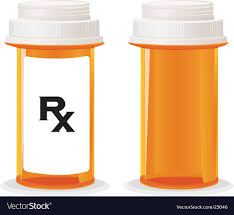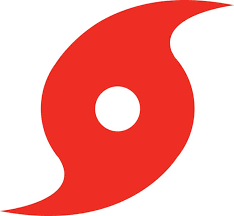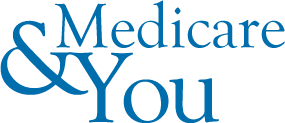-
Insurance
- Trout Team
-
Resources
- Join The Team
- Employee Success
- Fixing the ACA "Family Glitch"
- Aetna/CVS Health NC
- Medicaid Expansion
- Client Center
- Newsletter
- Reviews
- Blog
-
Articles
>
- Health Insurance 2022
- Friday Health
- Comparing 2022 Plans
- Insurance Partners
- Best Value Insurance Plans
- ARP Facts CMS
- ARP Unemployment
- ARP 2020 Excess Premium Subsidy
- No Income Cap
- Unemployment Glitch
- Asheville Homesharing
- 2019 Verification-a
- BCBS Online Setup
- APTC Income 2023 & Tax Form 1040
- Lost Subsidy
- Privacy Policy
-
Community
- Understanding Medicare 2024
- Weaverville Primary Spring Fling
- Alignment's 5-Star Switch
- Employer Networking w/ Just Economics
- FALLing with Families
- Blue Ridge Pride Festival
- Goombay & YMI
- YMI Winter Coat Drive
- Medicare Seminar
- Art in Autumn + MANNA
- Music on Main
- Western Women's Business Center Conference
- Mural on Main Street
- Expanded Team- Next Generation
- Back to School
- Weaverology
- Mother Earth Food
- Contact Us
|
1. Know your shopping window.
You have from October 15 through December 7 to shop around for a new Part D plan or change your Medicare advantage coverage for the following year. Because most people can’t change plans outside of this shopping window, it pays to be prepared. Some Medicare members can safely remain in their current plan without increased costs from one year to the next. In fact, some need to remain for other reasons (such as having their best option for Medicare health plan benefits and doctors tied to their Part D coverage, as explained below). 2. Check your Medicare Advantage plan. If you have a Medicare Advantage plan, you usually have to receive your drug benefits through the plan rather than a separate Part D insurer. In most of the United States, if you are one of the growing number of Medicare beneficiaries who receive their hospital and physicians benefits (Medicare A and Part B) through a private Medicare Advantage plan, that same insurer provides your Part D coverage. This means that when you change your Part D plan, your health and hospital benefits change too. You should consider switching Medicare Advantage plans if your plan’s Part D formulary for next year would limit your ability to continue taking your current prescriptions. Just be sure to choose a replacement Medicare plan that will also cover your current health care providers – in addition to covering your medications. Unless you’re really comfortable using a computer and other Internet tools, the best way to select a Part D plan is to contact the government’s 1-800-MEDICARE call center and ask the customer service agent to spend some time and walk you through the process of using Medicare.gov’s online Plan Finder to select a new plan. It’s easier to have an agent at Medicare help you through the process than to do it yourself, especially because the online tool itself is not very user friendly. 3. Check your formularies – and drug costs. Plans change their lists of covered drugs (formularies) and the drugs’ costs each year. Because prescription drugs are expensive, plans need to change their benefits and can require you to pay more (or less) for the same medication from one year to the next. Another thing to be aware is that Part D plans can add requirements that you receive the plan’s approval before covering your current medications next January. This is known as prior-authorization or pre-certification. If you can’t find a plan that covers all your medications, you may be able to work with your doctor to get your existing plan (that has changed your current medication to require pre-approval) to cover the drug anyway. To help speed up the process, you should keep any letters from your Part D insurer if it has approved coverage for one of your medications this year – as evidence to submit support your case. 4. It pays to shop around. Even without major coverage changes, new and different offerings can come to your area, so it still pays to shop around for new plans. Medicare Part D is the private sector’s first foray into a part of the Medicare program where all benefits are delivered by the private sector. To make Part D coverage palatable to budget analysts in Washington – who need to sign off before lawmakers can create something like a prescription drug benefit – the law’s authors created a “donut hole”(also known as the coverage gap), where you have to pay for most of the costs of your prescriptions. 5. Part D premiums aren’t everything. Part D premiums aren’t the whole story – but they are a big part of it. Benefits under Part D before, during and and after you pass through the donut hole change from year to year year. So it pays to closely examine your costs under each plan available, with some plans offering generic drugs without copays. If those offerings apply to your medications, you could save a lot of money throughout the course of they year. In addition, some Part D plans offer enhanced coverage beyond a minimum level of prescription drug benefits required of insurers by the federal government. 6. Have a lower income? Expect different benefits. Low-income members including those who have both Medicare and Medicaid can wind up with different benefits. This is important. You probably know if you have Extra Help (also known as the Low-Income Subsidy or “LIS”) with your Part D coverage if your copays for all medications are between $3 and $7 dollars. (Cost sharing for a small segment of enrollees, between 135 and 150 percent of the poverty level, is a fixed percentage rather than a copay, but is still reduced compared to those who don’t receive a Part D subsidy.) 7. Part D plan quality is in the stars. Pay attention to Star Ratings when selecting your plan. Although your primary focus should be whether your medications will be covered, the federal government’s Star Ratings program shows how well a Medicare prescription health or drug plan is doing in a number of ways that impact you. Good star ratings – especially ratings of four stars and above – can mean a plan has demonstrated quality customer service and has a track record of paying attention to your many health care needs (such as periodic screenings or health assessments). By that same token, you should be wary of plans with fewer than four stars. Those plans often have a track record of mistreating their members, providing subpar customer service, and being slow to process member claims and appeals – delaying or even preventing access to needed health care.
0 Comments
Want to switch to a different Medicare Advantage plan? Starting in 2019, you’ll have a new opportunity to do so. You’ll have more time to enroll (or disenroll). We’ve captured the details of the Medicare Advantage open enrollment changes below.
Original Medicare (Parts A and B) covers many medical and hospital services. But it doesn’t cover everything. Many people are surprised to learn that prescription drugs aren’t covered. You can buy drug coverage through Medicare Part D, but it’s not provided by Part A or Part B.
Here are some other services that are not covered by Original Medicare:
Your questions about Medicare- answered!
Make sure you're covered when you're 65!
Contact us today for Medicare Advantage and Supplement Packages. Do you need proof you receive Social Security benefits or have Medicare? Great news- you can request a Benefit Verification Letter for proof of either situation.
A Benefit Verification Letter is an official letter from the Social Security Administration that proves the following information:
Request your letter online at my Social Security. Alternatively, you can call the Social Security Administration at 1-800-772-1213 Monday through Friday from 7 a.m. to 7 p.m. Additional Resources: Medicare helpline available 24/7 at 1-800-MEDICARE (1-800-633-4227). Medicare.gov: The Official U.S. Government Site for Medicare my Social Security: Information on how to create an account — SocialSecurity.gov |
“We do not offer every plan available in your area. Any information we provide is limited to those plans we do offer in your area. Please contact Medicare.gov or call 1.800.Medicare to get information on all of your options.”
Trout Insurance is an independent authorized agency licensed to sell and promote products from Blue Cross and Blue Shield of North Carolina (Blue Cross NC). The content contained in this site is maintained by Trout Insurance. Blue Cross and Blue Shield of North Carolina is an independent licensee of the Blue Cross and Blue Shield Association. ®, SM Registered marks of the Blue Cross and Blue Shield Association.”
|
-
Insurance
- Trout Team
-
Resources
- Join The Team
- Employee Success
- Fixing the ACA "Family Glitch"
- Aetna/CVS Health NC
- Medicaid Expansion
- Client Center
- Newsletter
- Reviews
- Blog
-
Articles
>
- Health Insurance 2022
- Friday Health
- Comparing 2022 Plans
- Insurance Partners
- Best Value Insurance Plans
- ARP Facts CMS
- ARP Unemployment
- ARP 2020 Excess Premium Subsidy
- No Income Cap
- Unemployment Glitch
- Asheville Homesharing
- 2019 Verification-a
- BCBS Online Setup
- APTC Income 2023 & Tax Form 1040
- Lost Subsidy
- Privacy Policy
-
Community
- Understanding Medicare 2024
- Weaverville Primary Spring Fling
- Alignment's 5-Star Switch
- Employer Networking w/ Just Economics
- FALLing with Families
- Blue Ridge Pride Festival
- Goombay & YMI
- YMI Winter Coat Drive
- Medicare Seminar
- Art in Autumn + MANNA
- Music on Main
- Western Women's Business Center Conference
- Mural on Main Street
- Expanded Team- Next Generation
- Back to School
- Weaverology
- Mother Earth Food
- Contact Us





 RSS Feed
RSS Feed
